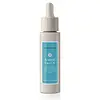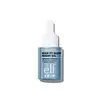What's inside
What's inside
 Key Ingredients
Key Ingredients

 Benefits
Benefits

 Concerns
Concerns

No concerns
 Ingredients Side-by-side
Ingredients Side-by-side

Caprylic/Capric Triglyceride
MaskingHelianthus Annuus Seed Oil
EmollientHeptyl Undecylenate
EmollientSqualane
EmollientHydroxypinacolone Retinoate
Skin ConditioningBalanites Roxburghii Seed Oil
Skin ConditioningLimnanthes Alba Seed Oil
Skin ConditioningPersea Gratissima Oil
Skin ConditioningDimethyl Isosorbide
SolventOryza Sativa Bran Extract
Skin ConditioningHelianthus Annuus Extract
EmollientRosmarinus Officinalis Leaf Extract
AntimicrobialTocopheryl Acetate
AntioxidantTocopherol
AntioxidantCaprylic/Capric Triglyceride, Helianthus Annuus Seed Oil, Heptyl Undecylenate, Squalane, Hydroxypinacolone Retinoate, Balanites Roxburghii Seed Oil, Limnanthes Alba Seed Oil, Persea Gratissima Oil, Dimethyl Isosorbide, Oryza Sativa Bran Extract, Helianthus Annuus Extract, Rosmarinus Officinalis Leaf Extract, Tocopheryl Acetate, Tocopherol
Caprylic/Capric Triglyceride
MaskingHelianthus Annuus Seed Oil
EmollientTocopherol
AntioxidantVitis Vinifera Seed Oil
EmollientSimmondsia Chinensis Seed Oil
EmollientPersea Gratissima Oil
Skin ConditioningLimnanthes Alba Seed Oil
Skin ConditioningDimethyl Isosorbide
SolventHydroxypinacolone Retinoate
Skin ConditioningStearyl Glycyrrhetinate
Skin ConditioningVaccinium Angustifolium Fruit Extract
Skin ProtectingChamomilla Recutita Flower Oil
MaskingBorago Officinalis Seed Oil
EmollientEthylhexylglycerin
Skin ConditioningPentaerythrityl Tetracocoate
EmollientCI 61565
Cosmetic ColorantCI 60725
Cosmetic ColorantCaprylic/Capric Triglyceride, Helianthus Annuus Seed Oil, Tocopherol, Vitis Vinifera Seed Oil, Simmondsia Chinensis Seed Oil, Persea Gratissima Oil, Limnanthes Alba Seed Oil, Dimethyl Isosorbide, Hydroxypinacolone Retinoate, Stearyl Glycyrrhetinate, Vaccinium Angustifolium Fruit Extract, Chamomilla Recutita Flower Oil, Borago Officinalis Seed Oil, Ethylhexylglycerin, Pentaerythrityl Tetracocoate, CI 61565, CI 60725
Ingredients Explained
These ingredients are found in both products.
Ingredients higher up in an ingredient list are typically present in a larger amount.
This ingredient is an emollient, solvent, and texture enhancer. It is considered a skin-softener by helping the skin prevent moisture loss.
It helps thicken a product's formula and makes it easier to spread by dissolving clumping compounds.
Caprylic Triglyceride is made by combining glycerin with coconut oil, forming a clear liquid.
While there is an assumption Caprylic Triglyceride can clog pores due to it being derived from coconut oil, there is no research supporting this.
Learn more about Caprylic/Capric TriglycerideDimethyl Isosorbide is a low-irritation solvent that helps deliver actives into your skin. It is created from glucose.
Research shows how well this ingredient works depends on the active and formulation rather than the concentration alone. This means adding more Dimethyl Isosorbide does not guarantee better penetration of ingredients into the skin.
Helianthus Annuus Seed Oil is the oil derived from the seeds of a Sunflower. Sunflower seed oil is non-fragrant. It is an emollient, meaning it helps to soften the skin.
Sunflower seed oil contains many fatty acids. The fatty acids found in sunflower seeds include (from highest amount to least): linoleic acid, myristic acid, palmitic acid, stearic acid, arachidic acid, oleic acid, and linolenic acid.
These fatty acids help the skin create ceramides. Ceramides play a role in repairing the skin barrier.
Helianthus Annuus Seed Oil helps moisturize the skin. This in turn helps the skin look more rejuvenated and smoother.
Sunflowers are rich in vitamin E.
Historians believe Indigenous cultures of North America domesticated sunflowers before corn. Thus they relied on sunflower oil for a variety of uses. One such use is moisturizing skin and hair.
Sunflower seed oil may not be fungal acne safe. We recommend speaking with a professional if you have any concerns.
Learn more about Helianthus Annuus Seed OilThis ingredient is a retinoid. It usually goes by a more common name: "Granactive".
Hydroxypinacolone Retinoate (HPR) belongs to the class of retinoids that also includes retinol and tretinoin.
Retinoids have been proven to:
So what is the difference between all the retinoids?
Most retinoids need to go through a conversion line to become effective on skin. The ending product is retinoic acid. Retinoic acid is AKA tretinoin.
HPR is an ester of tretinoin. Emerging studies suggest HPR to have an added benefit that other retinoids don't have: Low irritation.
A study from 2021 found HPR to have the greatest stability when exposed to light and temperature out of all the commercial retinoids.
A note about naming:
The name "Granactive" is the trade name and the name most commonly used on packages.
Granactive is the name of the mixture - about 90% solvent and 10% HPR. A product with 5% granactive has 0.5% HPR.
Learn more about Hydroxypinacolone RetinoateLimnanthes Alba Seed Oil is the oil extracted from the seeds of the meadowfoam plant. This oil is non-fragrant and is an emollient. As an emollient, meadowfoam seed oil helps soften and hydrate the skin.
Meadowfoam seed oil is stable and has a long shelf life due to its chemical structure. It has the highest concentration of stable fatty-acids among plant oils, preventing it from degrading once exposed to oxygen.
Due to the fatty acid content, this ingredient may not be fungal-acne safe.
Meadowfoam is native to California and Oregon.
Learn more about Limnanthes Alba Seed OilPersea Gratissima Oil is also known as avocado oil.
Avocado Oil has antioxidant properties. It is mostly made up of the glycerides of fatty acids. About 67% of these fatty acids is made up of oleic acid. Palmitic acid and linoleic acid are also present.
These fatty acids help hydrate and soften the skin. It may increase collagen content in the skin. Collagen helps keep your skin plump and firm. This ingredient helps reduce inflammation and has not shown to clog pores.
This ingredient may not be fungal-acne safe due to its high fatty acid content.
Avocados also have B vitamins, vitamin K, vitamin C, vitamin E, and potassium.
Learn more about Persea Gratissima OilTocopherol (also known as Vitamin E) is a common antioxidant used to help protect the skin from free-radicals and strengthen the skin barrier. It's also fat soluble - this means our skin is great at absorbing it.
Vitamin E also helps keep your natural skin lipids healthy. Your lipid skin barrier naturally consists of lipids, ceramides, and fatty acids. Vitamin E offers extra protection for your skin’s lipid barrier, keeping your skin healthy and nourished.
Another benefit is a bit of UV protection. Vitamin E helps reduce the damage caused by UVB rays. (It should not replace your sunscreen). Combining it with Vitamin C can decrease sunburned cells and hyperpigmentation after UV exposure.
You might have noticed Vitamin E + C often paired together. This is because it is great at stabilizing Vitamin C. Using the two together helps increase the effectiveness of both ingredients.
There are often claims that Vitamin E can reduce/prevent scarring, but these claims haven't been confirmed by scientific research.
Learn more about Tocopherol